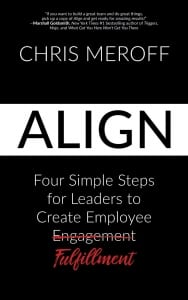2020 Analysis: Which Financial Services Sector Saw the Greatest Upsurge in Demand Due to COVID-19

The research can be found at www.awaken.io/blog/boom-or-bust and was derived from collecting Trustpilot data. They used this data to determine the demand for various financial sector services in the initial months of 2020 when the pandemic hit and the same months in 2019.
Financial Service Sector Growth in the UK and USA
The two nations have experienced an increase in demand for financial services. However, there is a significant difference between them. While the Uk saw a 175% increase, the US only saw a 47%. Despite this, both rises were sudden and unprecedented, forcing financial service providers to update their business models quickly.
In-person meetings were out of the question, and these services typically rely on them. Switching to new procedures was imperative if they were to deliver high-quality assistance to customers regardless of the pandemic. Customers flooded support centres with calls and messages, and many found it difficult to adjust to the demand.
As a result of the nature of the COVID-19 enforced changes, even the most traditional businesses had to embrace modern technology and recognise its value. With the increased availability of self-service websites and application, pressure on customer service agents was lightened. Through the use of technology tools such as voice analytics, it has minimised the average call handling time while enabling satisfactory customer service provision.
Banking & Money
Banks and other loan businesses in the UK readily offered clients a break period and holiday payments on credit cards, loans and mortgages. Banks also reduced rates on new loans in an attempt to attract customers and generate revenue. With certain branches being closed, banks would provide great emphasis on their online and mobile platforms to be used during the pandemic. Banks wanted customers to remain safe in the knowledge that they could still access a variety of services on their online platforms and still receive additional help regarding any queries that they may have.
The UK people took advantage of these offers, and the sector saw a 204% rise. Though the US experienced a 148% rise in demand, this reflects a need to borrow additional benefits did not facilitate that.
Real Estate
In March, the UK placed the conveyancing process on hold. This prevented completion form taking place and home viewings were against COVID guidelines. Surprisingly, the nation still has an 87% rise in demand for real estate services.
Due to the initial pause in the sector, there was a backlog of eager buyers and sellers. When the government reopened markets in June, demands poured on. Another factor that facilitated the rise was eradicating stamp duty by the Uk government, which is to remain until spring 2021.
The US witnessed a nominal 3% growth. Different states had their regulations guiding competitions and home viewings. Still, the main factor was that new listings became rare because property owners were unwilling to sell in a period of economic upheaval.
Insurance
One of the things people cherish about the UK is the National Health Service. Unfortunately, its services were quickly stretched because of the influx of COVID-related health issues. Scheduled appointments and procedures had to be pushed back to since healthcare providers needed to prioritise coronavirus patients.
Numerous individuals were compelled to seek private healthcare to reduce the NHS’s pressure while ensuring they received the best care. This shift resulted in a 311% increase in insurance demand in the UK. In the US, a rise took place, but it was only 26%.
The hike in demand in the US was relatively low because many Americans already have health insurance and did not need to purchase any because of the pandemic. Those who do not have insurance likely lack access on account of affordability. The pandemic did not suddenly make insurance coverage affordable.
Health insurance was not the only form that witnessed growing demand; travel insurance grew in popularity. Usually, only a minority of travellers claim their insurance, but the numerous cancellation resulted in a flood of claims.
Credit & Debit Services in the UK saw a 52% rise, but they dropped by 16% in the USA. Investment and Wealth experienced a 30% rise in the US and 119% in the UK. The financial sector is currently bracing itself for another impact as a second wave hits the two states. The uncertainty of these times holds the danger of rising unemployment rates and financial struggles.


 Nobody likely knew what to expect when news of the newest coronavirus began popping up in December 2019. For many people, the reality probably didn’t sink in. After all, Europe and the United States remained mostly unaffected by most recent pandemic concerns. By January 20, 2020, though, the U.S. Centers for Disease Control and Prevention were singing a different tune. Nearly one year later, the pandemic shows no signs of ending, and business owners and consumers alike are wondering what to expect in 2021 and beyond.
Nobody likely knew what to expect when news of the newest coronavirus began popping up in December 2019. For many people, the reality probably didn’t sink in. After all, Europe and the United States remained mostly unaffected by most recent pandemic concerns. By January 20, 2020, though, the U.S. Centers for Disease Control and Prevention were singing a different tune. Nearly one year later, the pandemic shows no signs of ending, and business owners and consumers alike are wondering what to expect in 2021 and beyond.

